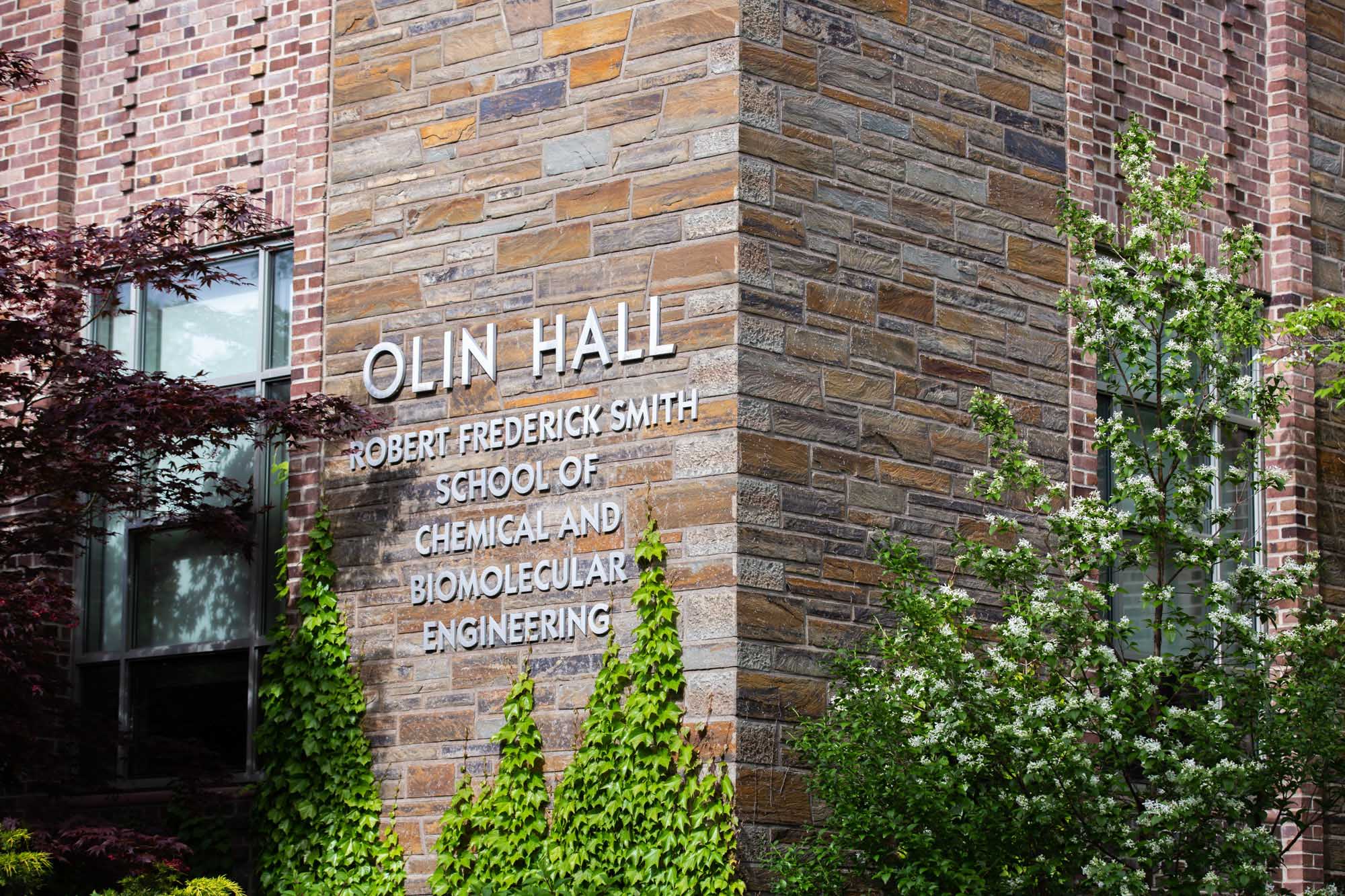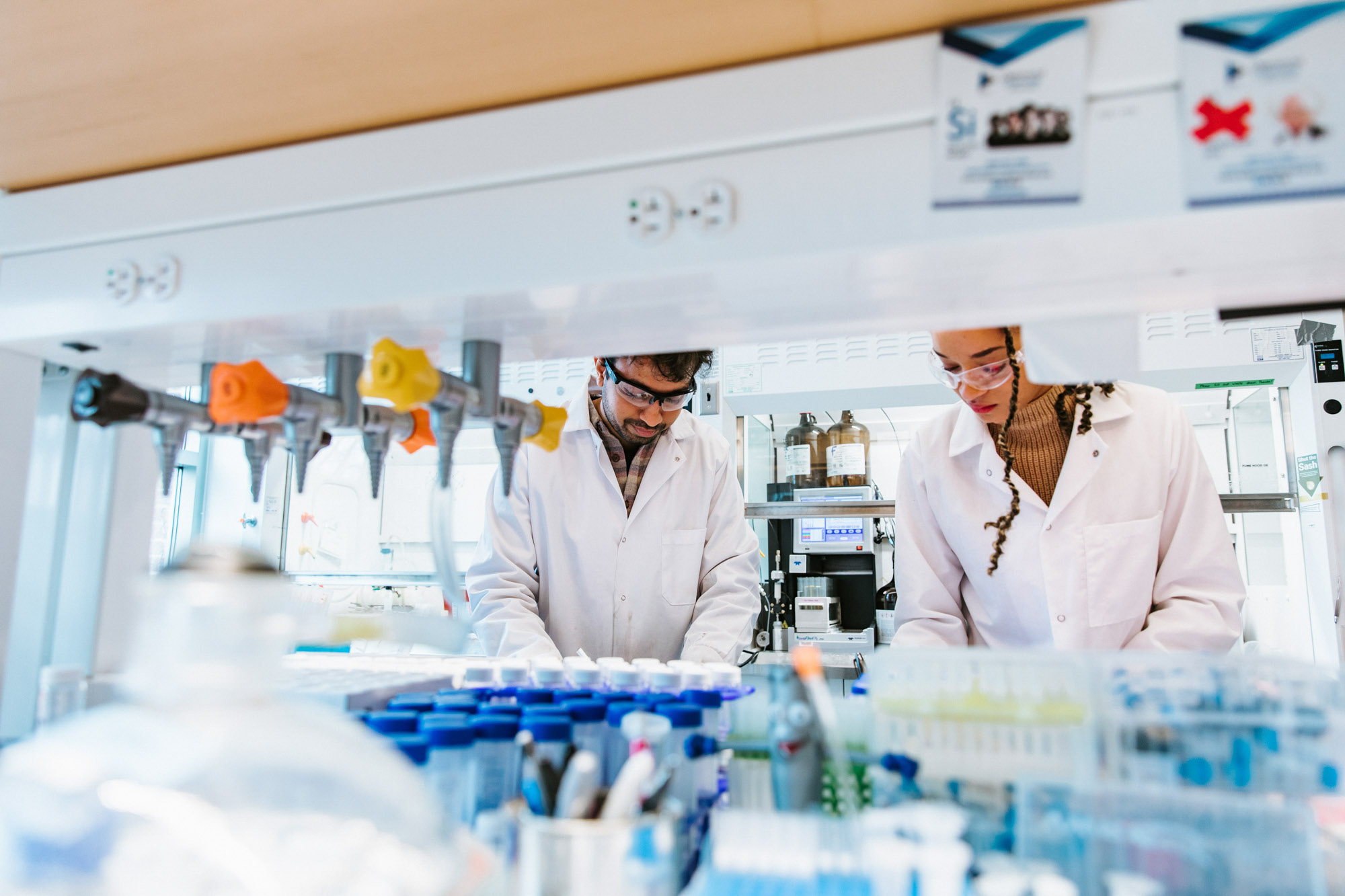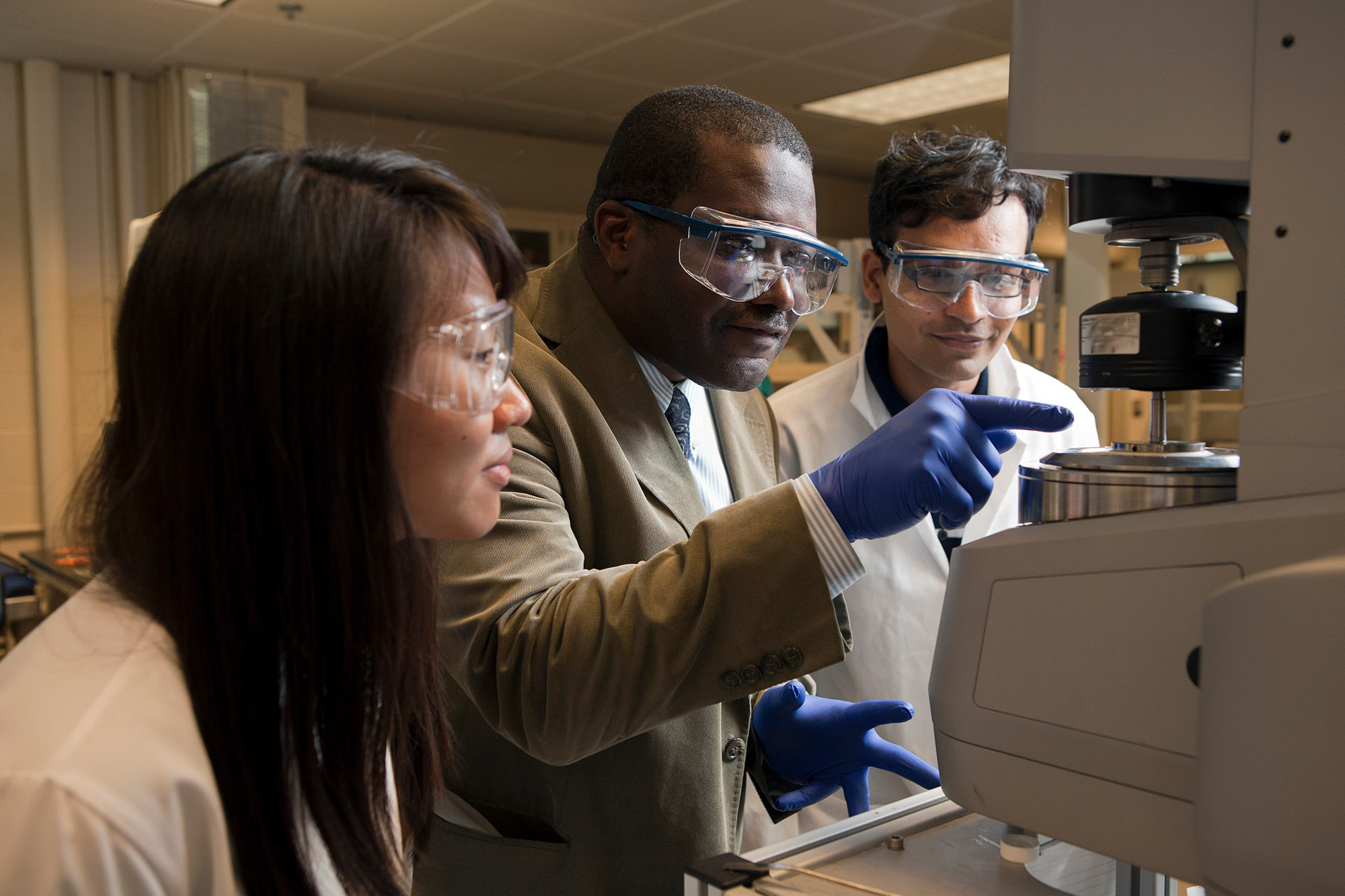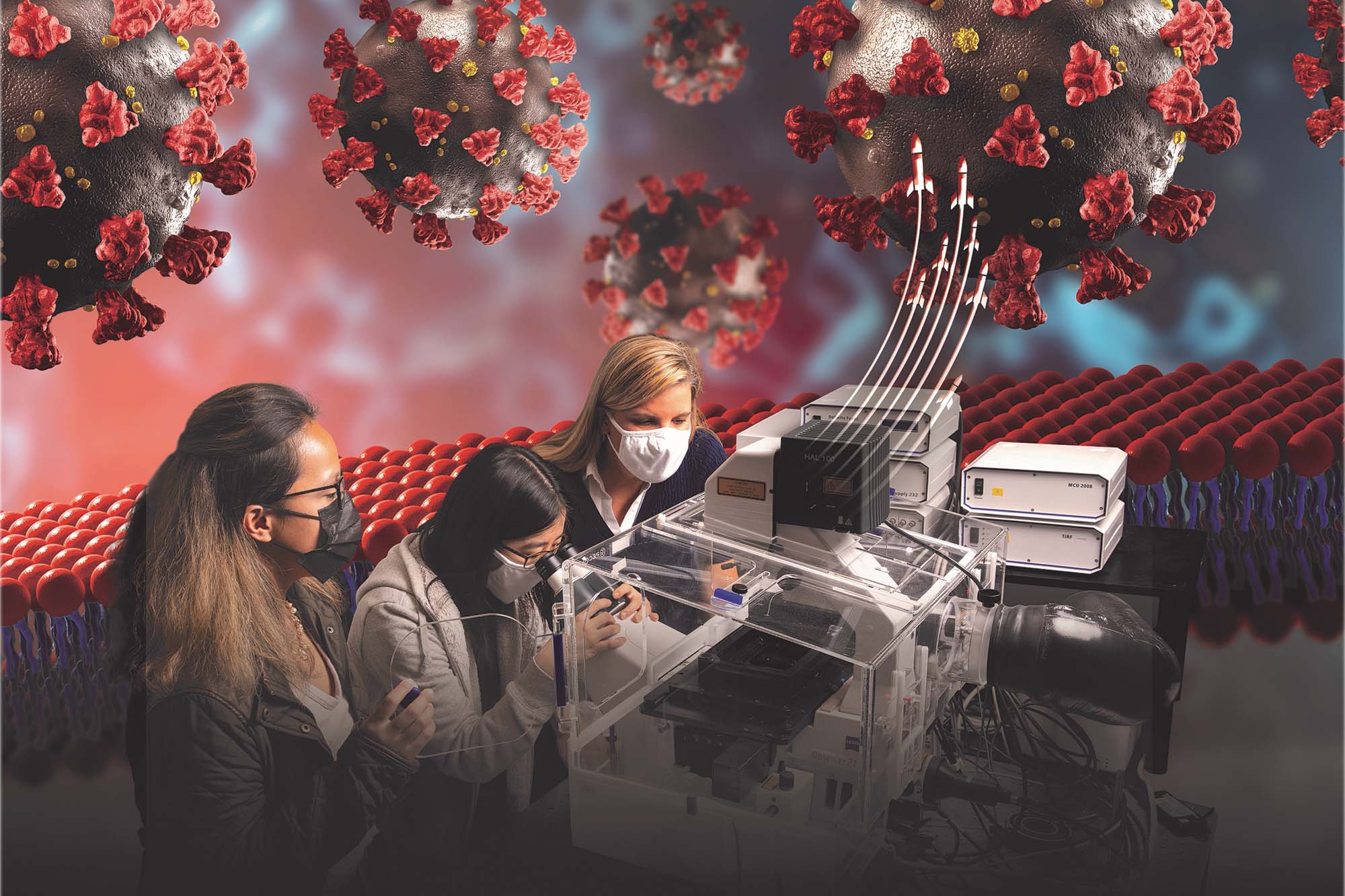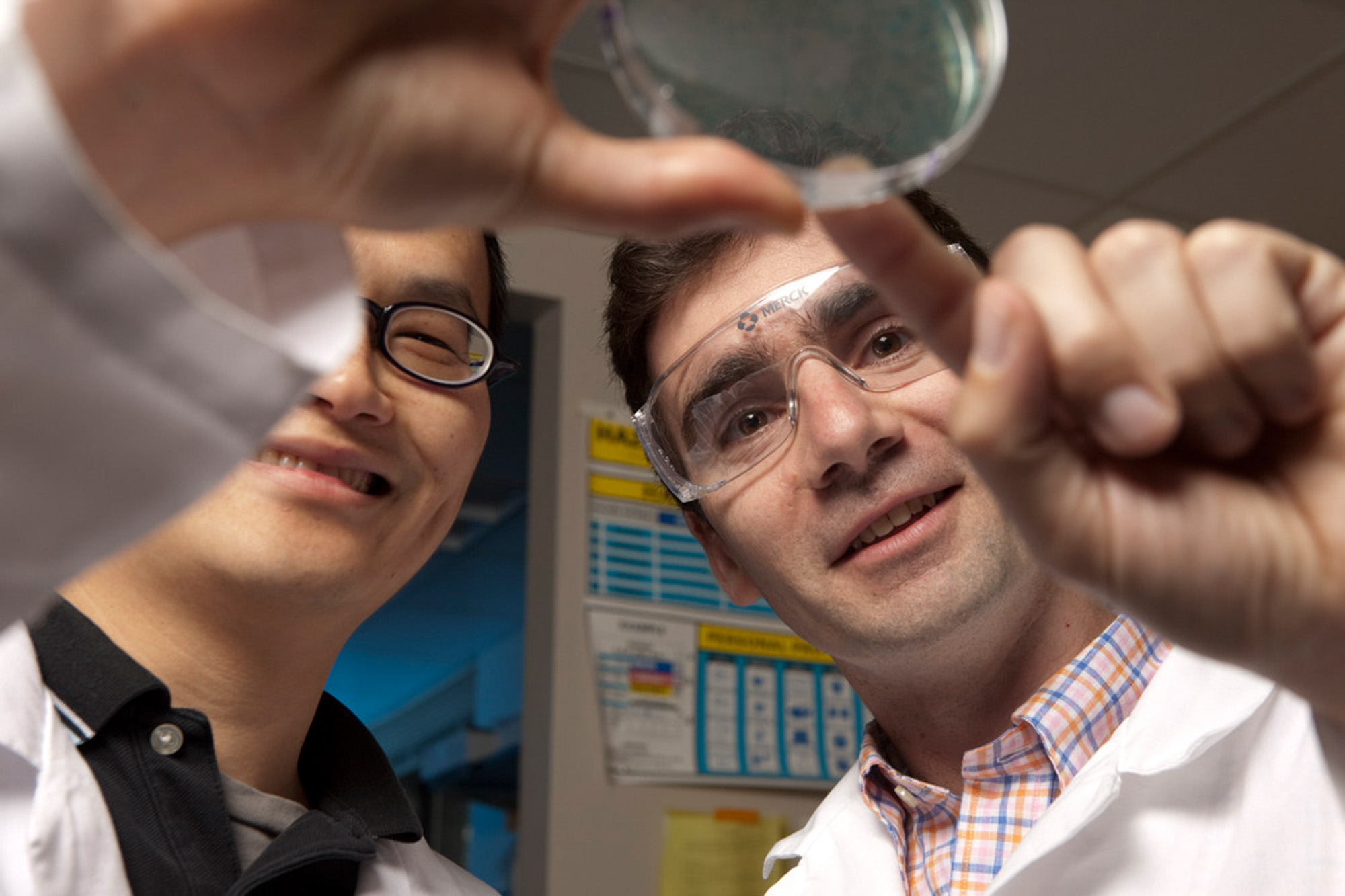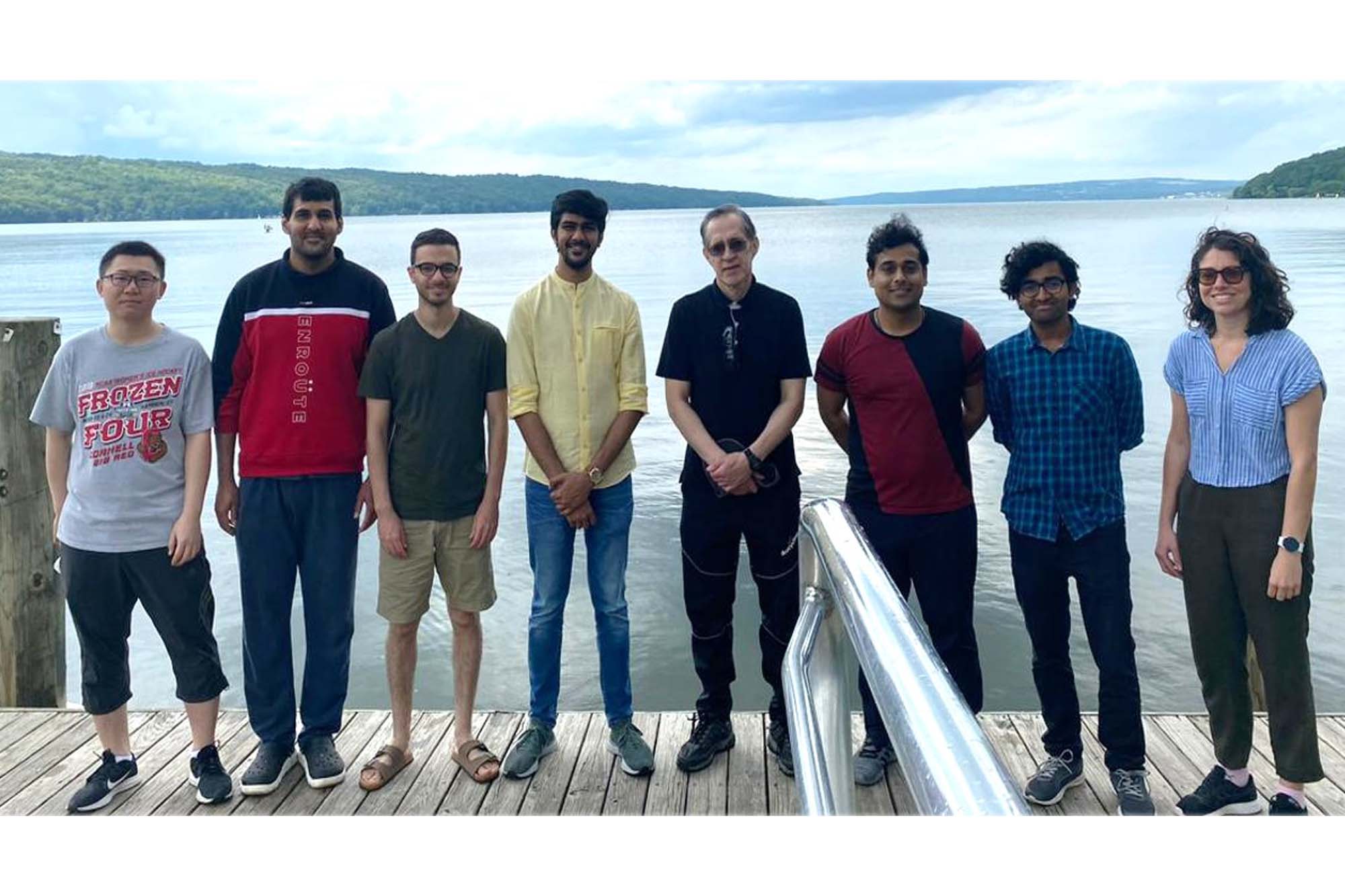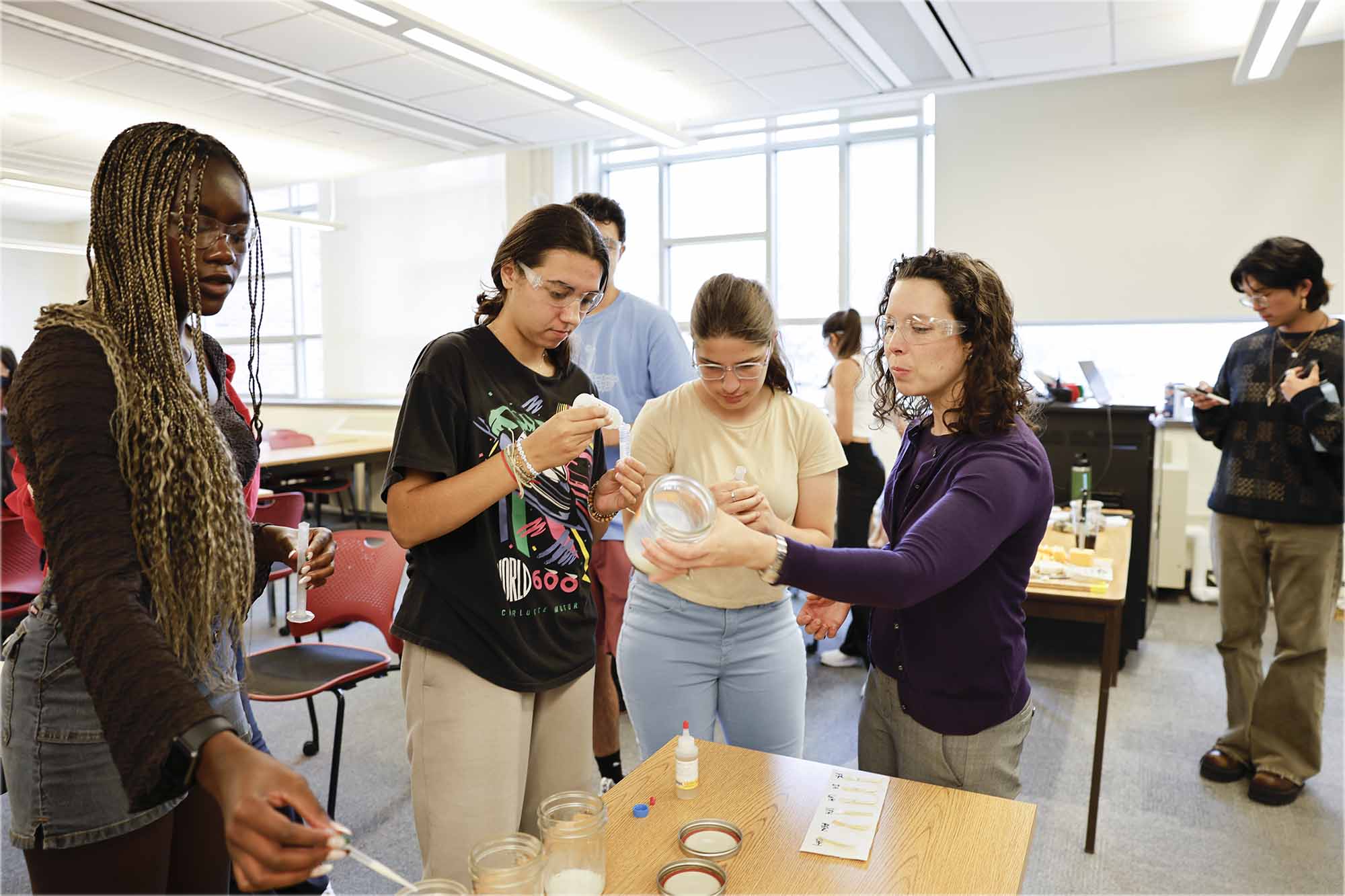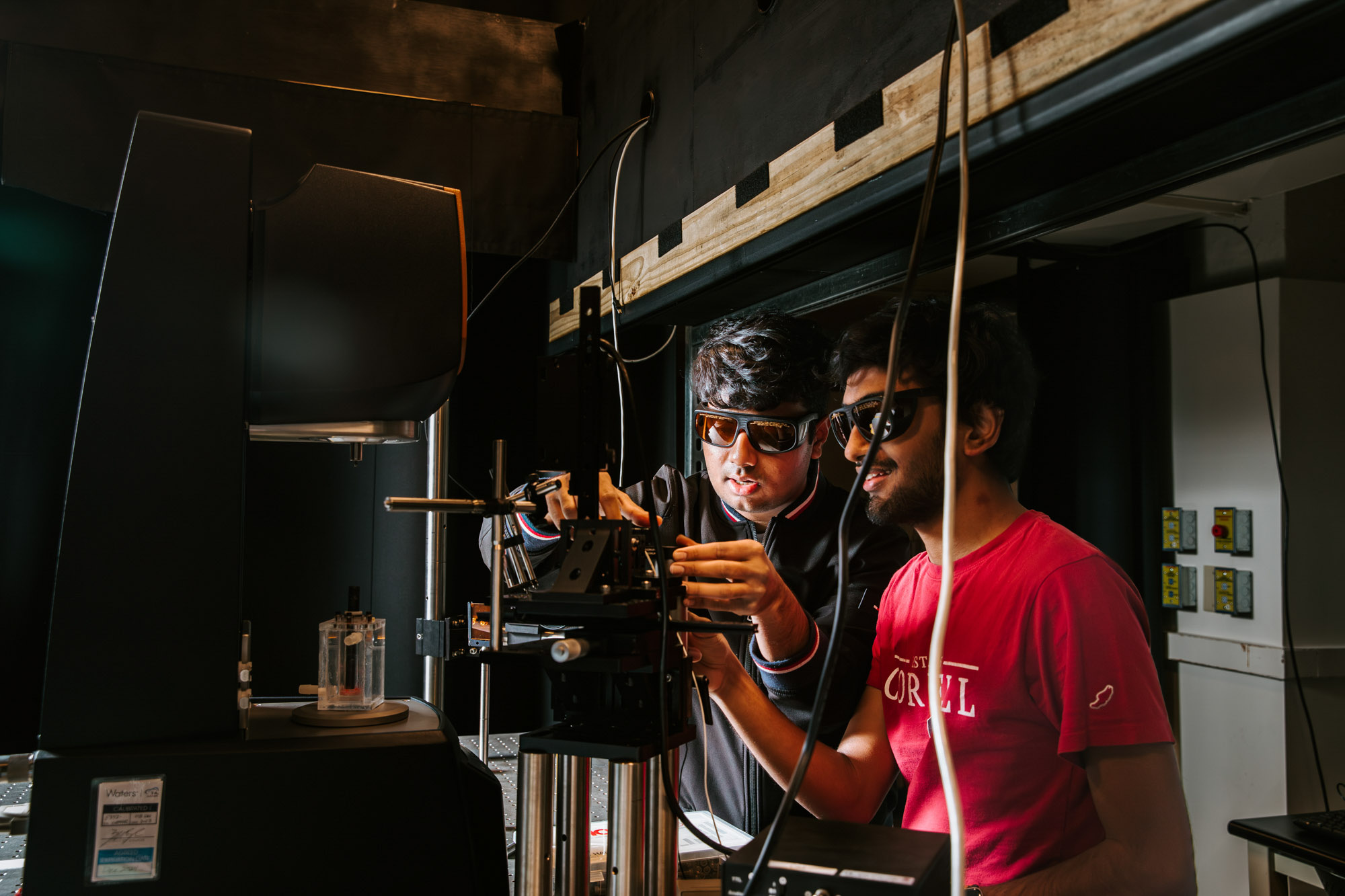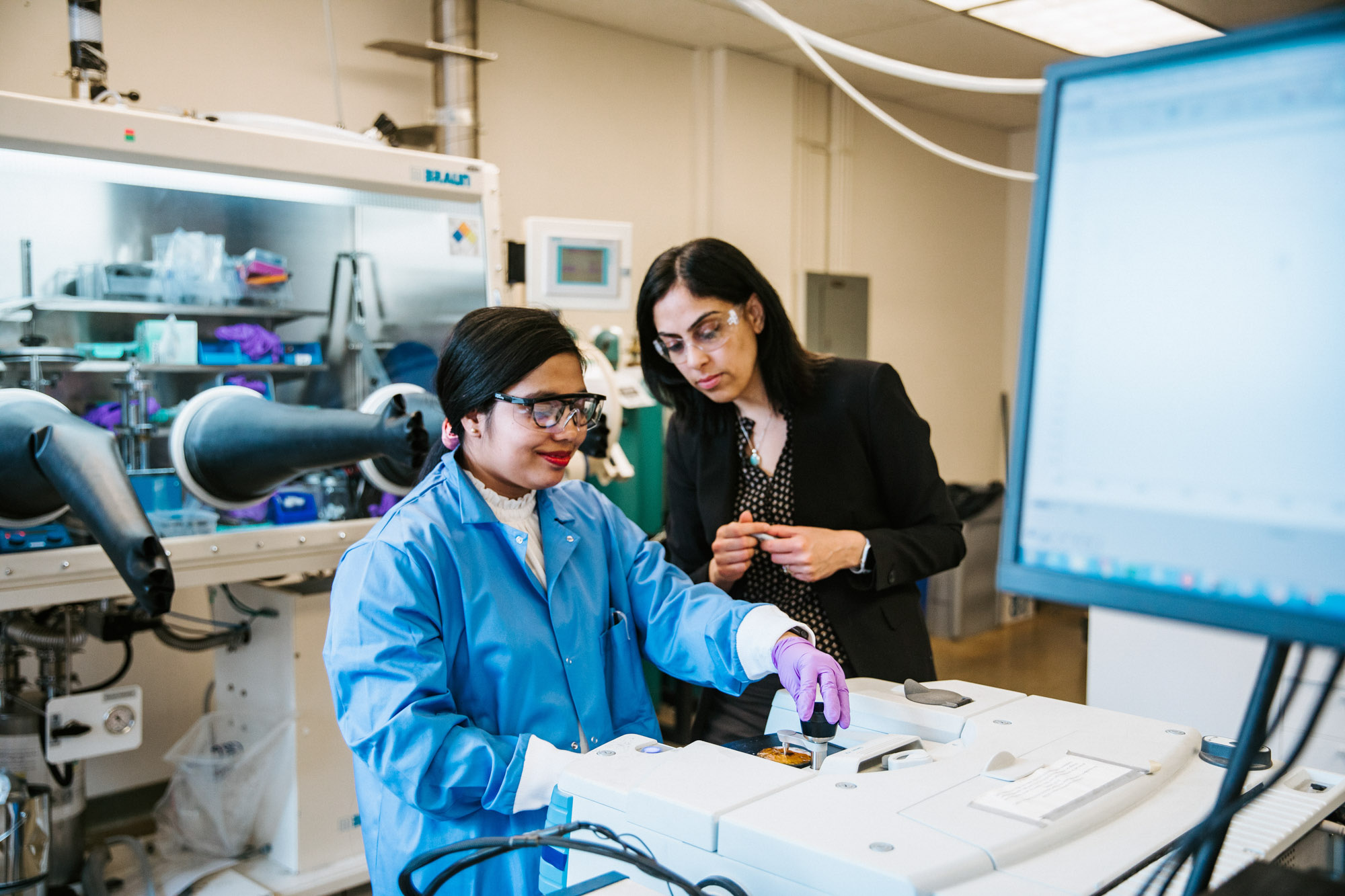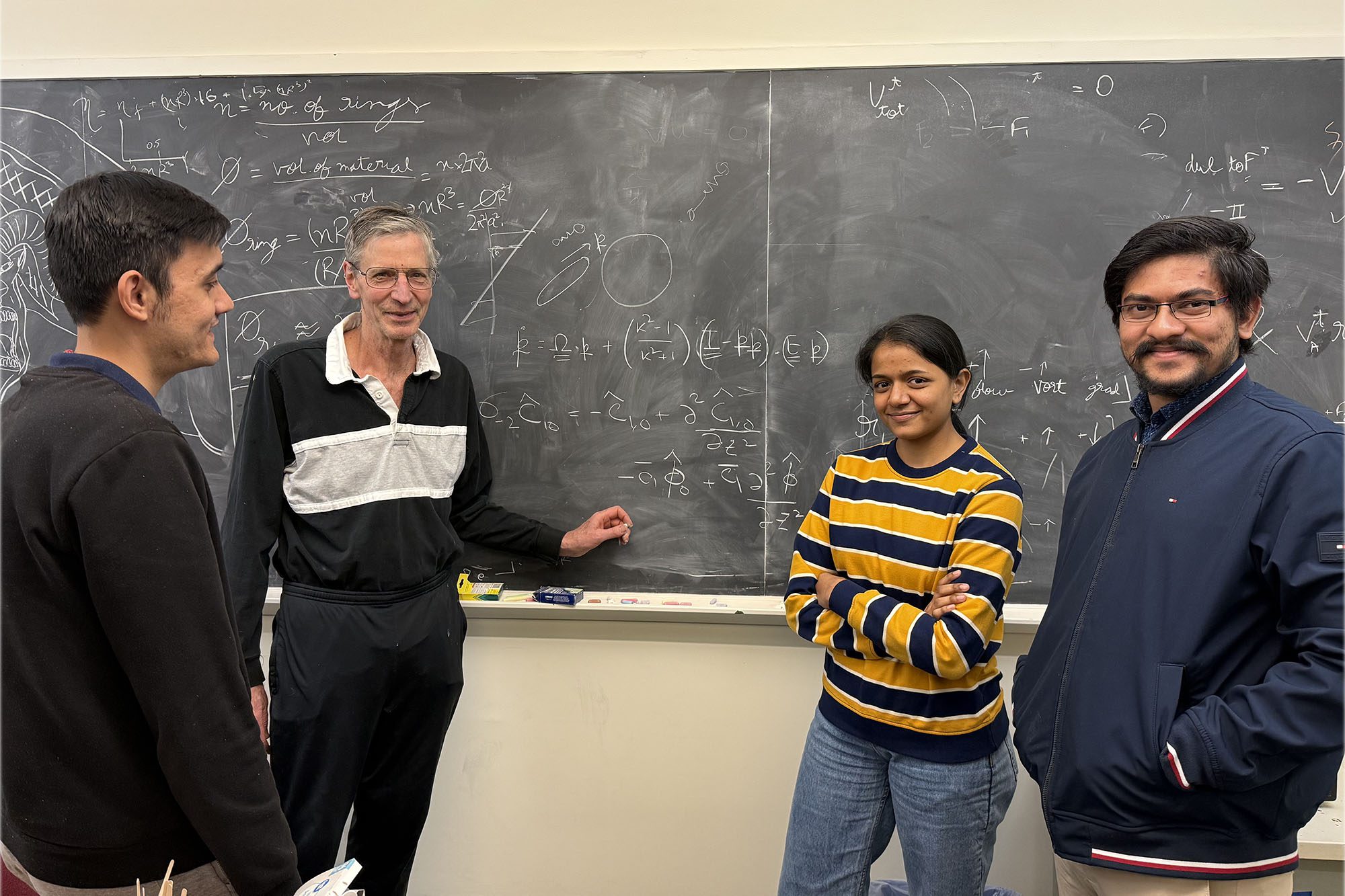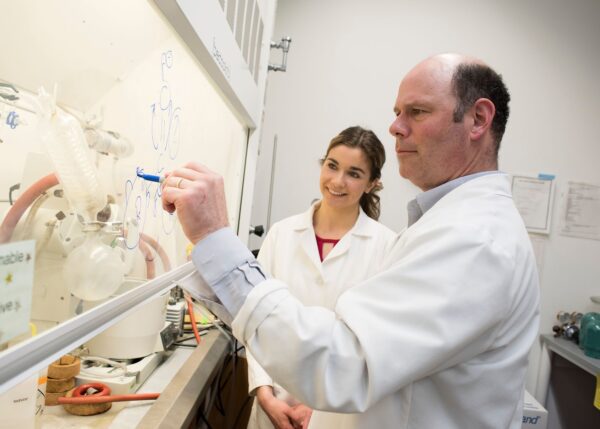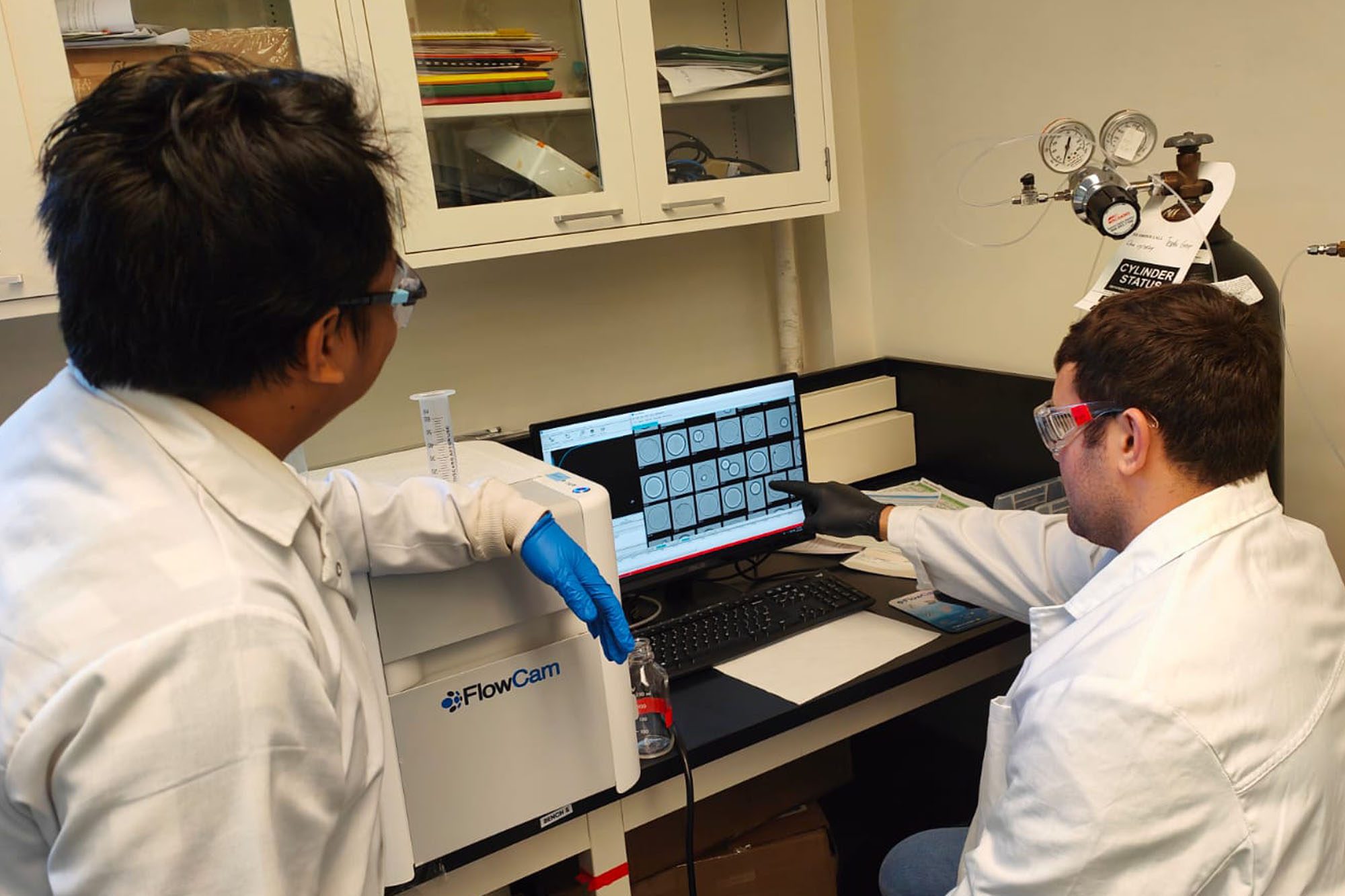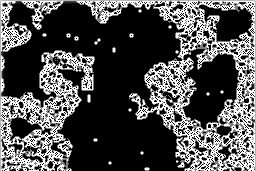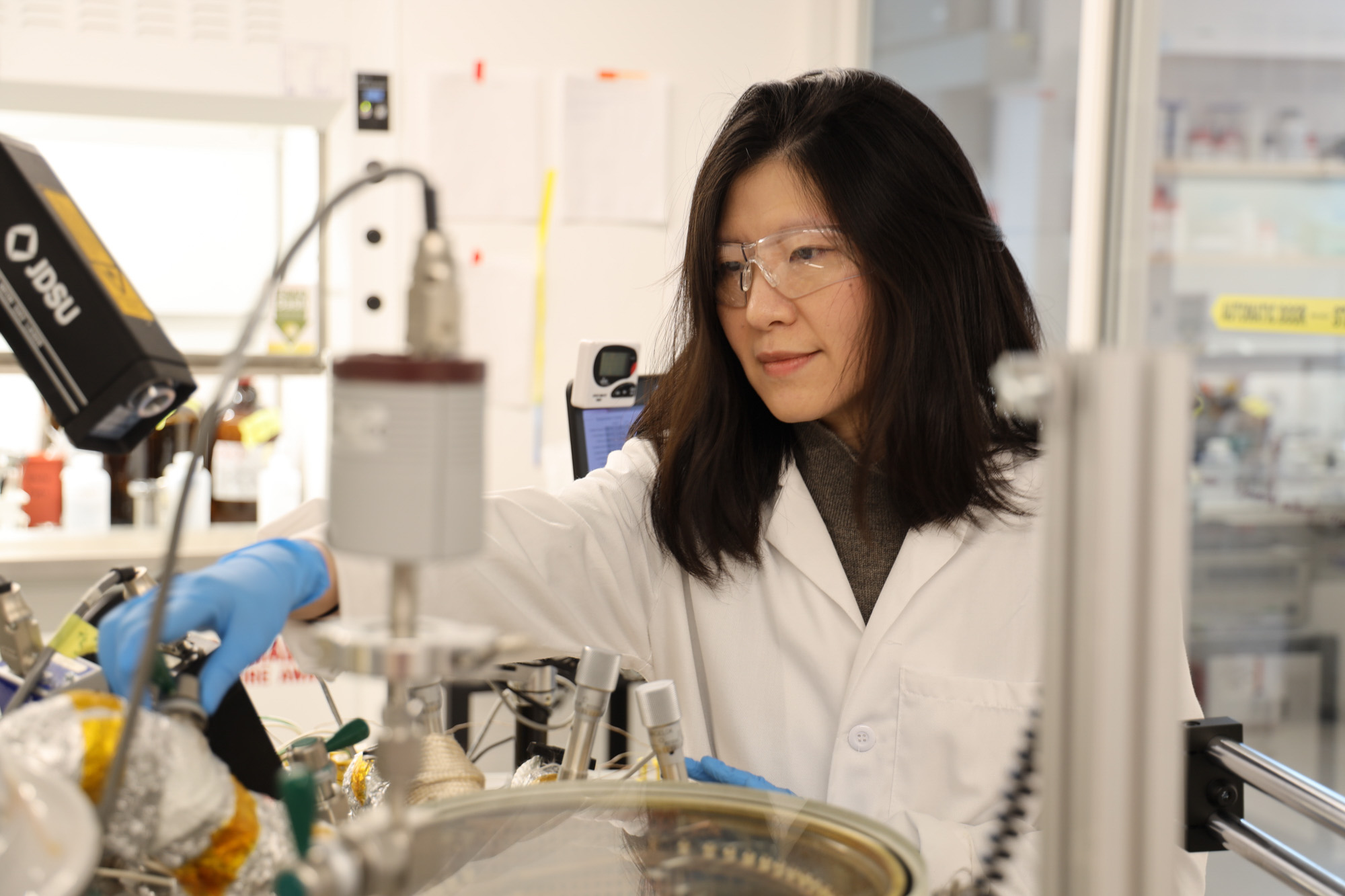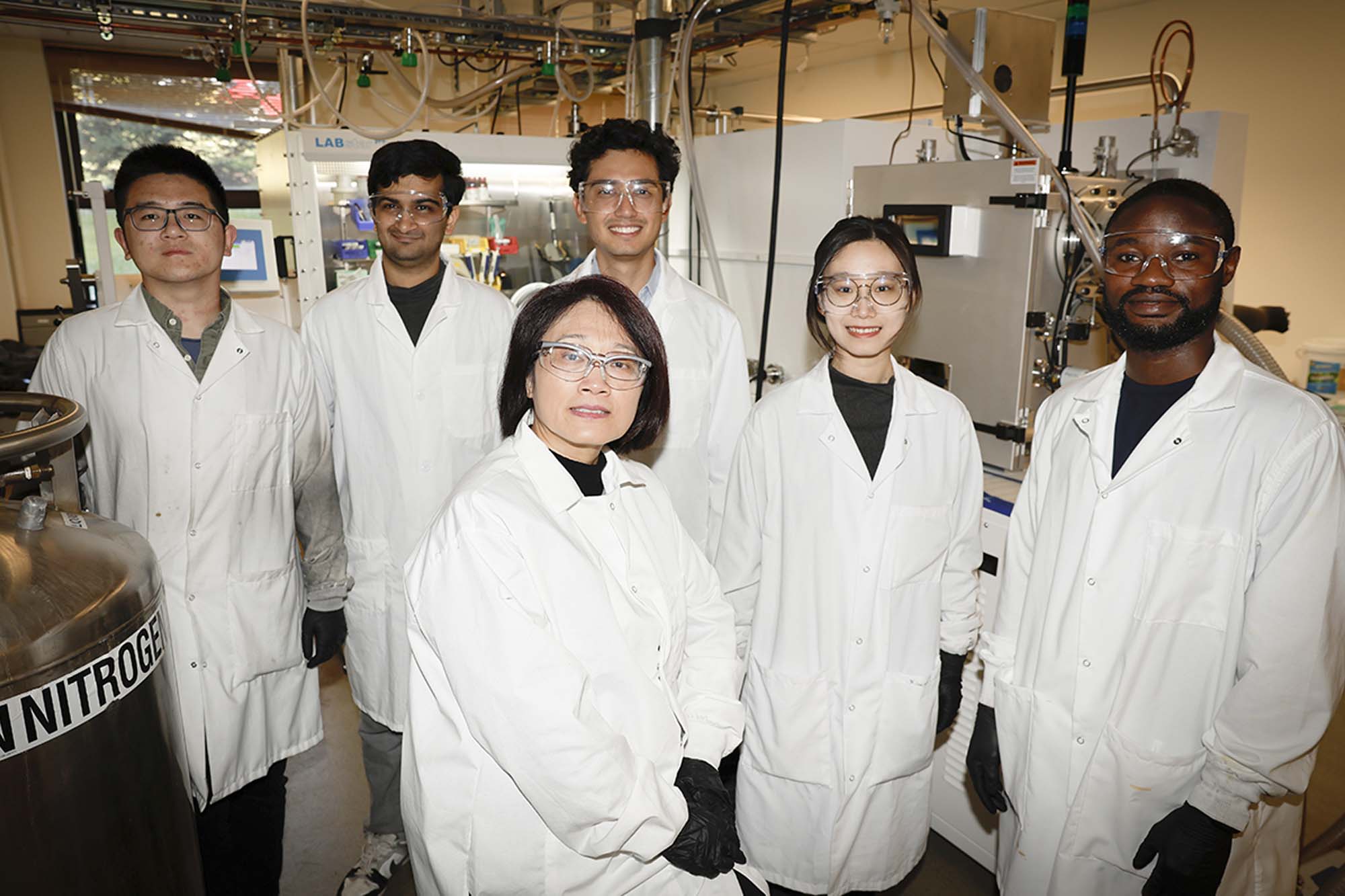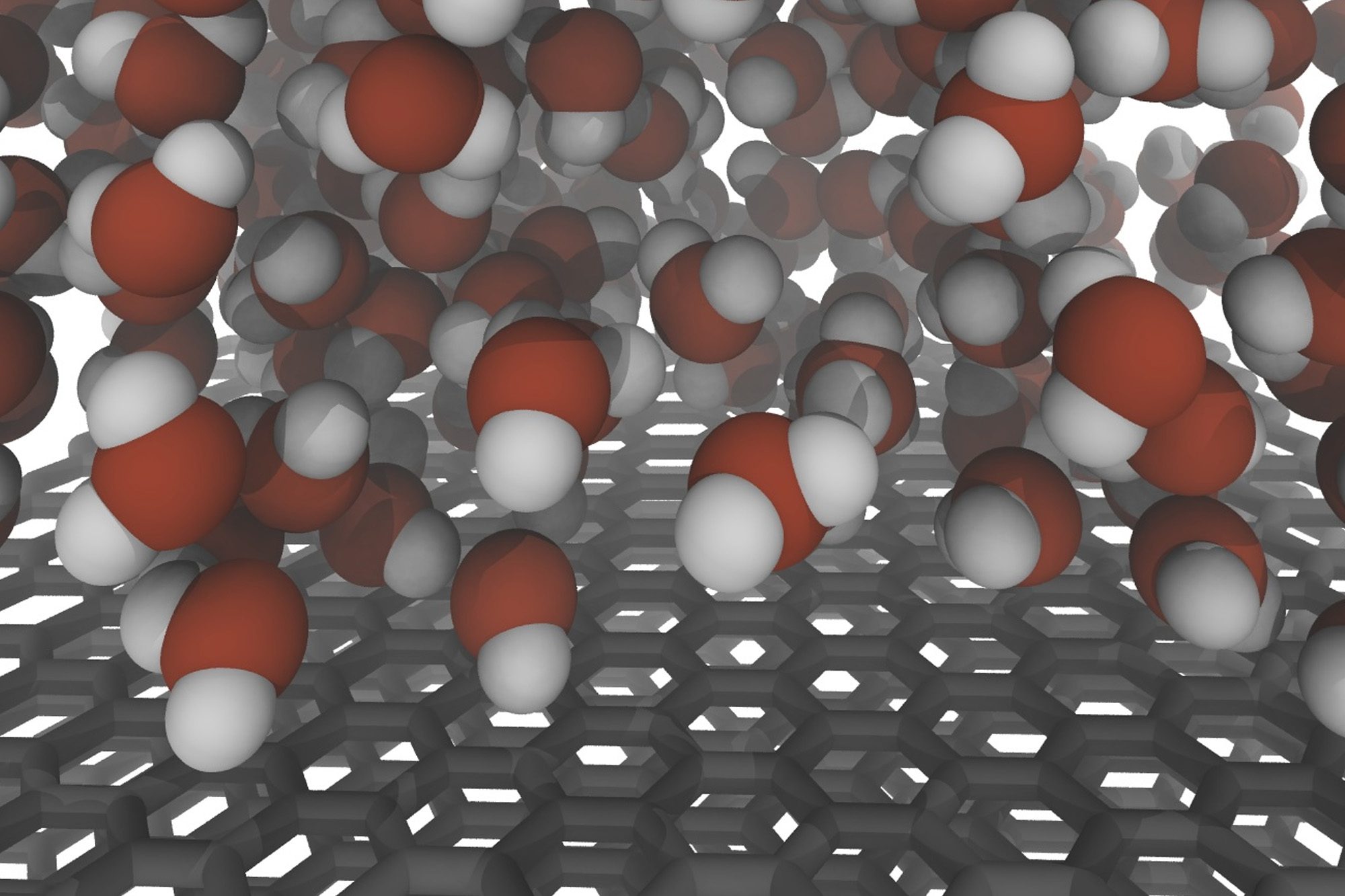-
![Exterior of Olin Hall in the summer with sign reading Olin Hall Robert Frederick Smith School of Chemical and Biomolecular Engineering.]()
Abbott Lab
The Abbott Lab investigates complex fluids and interfacial phenomena with the broad goal of establishing new principles for spatial and temporal control of soft materials. Seeking to provide fundamental knowledge that will enable the design of next-generation materials for monitoring of human exposure to chemical environments, precision medicine, food safety, energy-efficient separations processes and self-regulating autonomous micromachines.
-
![two researchers in lab coats conducting an experiment in the Alabi Lab.]()
Alabi Lab
The Alabi Lab leverages innovative molecular design and biomolecular engineering to advance the discovery and delivery of biologic-based therapeutics, enabling the development of functional and targeted therapeutics.
-
![Dean Lynden Archer and two students working in the Kaust Center in Kimball Hall.]()
Archer Lab
The Archer Lab’s research is rooted in nanoscale materials. We investigate how these materials behave at the fundamental level, as well as apply them to electrochemical energy storage (batteries).
-
![Alex Coso Strong gives a presentation about engineering education research.]()
Coso Strong Lab
The Coso Strong Lab, also known as the REDES Team, focuses on Engineering Education Research (EER), a branch of discipline-based education research (DBER) that examines the unique educational aspects within engineering contexts. As a team, we aim to create inclusive and equitable educational and work systems by examining critical structures and transition points within engineering education and engineering practice.
-
![Susan Daniel Lab and students work on COVID-19 research]()
Daniel Lab
The Daniel Research Team investigates phenomena at biological interfaces and chemically patterned surfaces that interact with soft matter – liquids; polymers; and biological materials, like cells, viruses, proteins, and lipids. Our team pioneered the use of “biomembrane chips” to conduct cell-free studies of membrane functions and biological processes that have implications for human health, host-pathogen interactions, novel sensing approaches, and synthetic biotechnologies.
-
![Professor Matt DeLisa and a student examine a petri dish in the DeLisa lab.]()
DeLisa Lab
Research in the DeLisa Research Lab focuses on understanding and controlling the molecular mechanisms underlying protein biogenesis – folding and assembly, membrane translocation and post-translational modifications – in the complex environment of a living cell.
-
![James Engstrom group Tushar at G Line.]()
Engstrom Lab
The Engstrom Group uses the sophisticated tools of the surface scientist to examine processes important to the manufacture of nanoscale thin film electronics, photovoltaics and displays. Experimental techniques such as supersonic molecular beam scattering, X-ray photoelectron spectroscopy, and quartz crystal microbalance are employed to examine atomic layer deposition and related processes.
-
![Escobedo lab stands on dock with Cayuga Lake behind them.]()
Escobedo Lab
The Escobedo Lab employs statistical mechanics, molecular simulation, and machine learning methods to engineer particle- and polymer-based self-assembled materials with enhanced mechanical, filtration, ion-conductive, thermal, or optoelectronic properties
-
![Allison Godwin works with students to label bottles in an Engineering education research EER classroom.]()
Godwin Lab
The Godwin, or STRIDE, Lab focuses on Engineering Education Research (EER), a branch of discipline-based education research (DBER) that examines the unique educational aspects within engineering contexts. In particular, we study how student development in psychosocial factors of identity, motivation, and belonging are shaped in engineering environments and develop evidence-based interventions, curricula, and practices that support a more equitable engineering education.
-
![Jillian Goldfarb lab liquid biofuels in four vials.]()
Goldfarb Lab
The Goldfarb Lab is on the hunt for fugitive carbon. We transform organic wastes – from dining hall food scraps to agricultural residues – into biofuels and sustainable carbon materials for water treatment, electrochemical processes and energy storage. Our group is a highly collaborative, interdisciplinary team with students from Chemical Engineering, Biological and Environmental Engineering, Systems Engineering… and even Archaeology. Our team brings together expertise in biofuels and in situ catalysis to develop new insights into the organic residue analysis of ancient pottery.
-
![Exterior of Olin Hall in the summer with sign reading Olin Hall Robert Frederick Smith School of Chemical and Biomolecular Engineering.]()
Hanrath Lab
The Hanrath Energy Lab explores nanostructured materials with properties by design inspired by applications in emerging sustainable energy technologies.
-
![Two students wearing safety goggles doing research in professor Sarah Hormozi's lab]()
Hormozi Lab
The Hormozi Lab explores real-world transport and fluid mechanics through large-scale computations, advanced lab experiments, and applied mathematics. Our research spans advanced materials, biophysics, and clean energy. In advanced materials, we study soft matter physics to engineer new materials. In biophysics, we examine bacterial motility and mechanics in various environments like mucus. In clean energy, we investigate geothermal heating sources.
-
![Exterior of Olin Hall in the summer with sign reading Olin Hall Robert Frederick Smith School of Chemical and Biomolecular Engineering.]()
Joo Lab
The Joo Lab focuses on the integration of continuum analysis with molecular details in nanomaterials processing. Areas of current interests include the microstructural rheology and mesoscale modeling of processing of complex fluids, the formation of nanostructures in nanomaterials, and the occurrence of viscoelastic instabilities in polymer flows.
-
![A student wearing a blue lab coat and purple gloves works in the lab while professor Vibha Kalra watches]()
Kalra Lab
The Kalra Lab’s research focuses on next generation batteries with specific research foci on design and manufacturing of new battery materials, in-operando characterizations to elucidate fundamental mechanisms that drive energy storage, and device-level assembly and testing. Additionally, her group is developing recycling and regeneration strategies to create a circular battery economy for a true positive impact on our climate.
-
![Donald Koch with students at the blackboard.]()
Koch Lab
The Koch group explores non-Newtonian rheology and transport processes in complex fluids including particulate suspensions and polymeric fluids. We employ ensemble averaged equation modeling, kinetic theory, asymptotic analysis, linear stability analysis, and numerical simulations to discover the myriad ways that complex macroscale transport processes arise from molecular, colloidal, and particle scale interactions.
-
![Sijin Li lab members stand together outside on path by stream.]()
Li Lab
The (Sijin) Li Lab’s research centers on advancing yeast and plant synthetic biology methods for systematic discovery and biomanufacturing of medicinal plant natural products, while also enabling the reprogramming of entire plants.
-
![A winter view of Olin Hall with snow covered trees and snow on the ground.]()
Paszek Lab
The work of the Paszek Lab aims to lead an effort to define and develop the genetic tools, imaging approaches, and conceptual frameworks to propel early stages of biophysical inquiry in glycoscience.
-
![David Putnam with graduate student, wearing lab coats and writing chemical formulas on fume hood glass in lab]()
Putnam Lab
The Putnam Lab applies chemistry and microbiology techniques to create functional biomaterials for applications in drug delivery, vaccines, and surgical applications
-
![Exterior of Olin Hall in the summer with sign reading Olin Hall Robert Frederick Smith School of Chemical and Biomolecular Engineering.]()
Stroock Lab
The Stroock Lab focuses on manipulating dynamics and chemical processes on micrometer scales. Current efforts in the lab relate to 1) the study and application of mechanisms for manipulating liquids inspired by plants, 2) fundamental studies of the properties of liquid water at negative pressure, 3) studies of the biophysical processes that control vascular development and applications of these processes in tissue engineering, and 4) theoretical, numerical, and experimental studies of fluid mechanical processes on small scales for chemical process.
-
![Tester lab students discuss sustainable energy research imaging on computer.]()
Tester Lab
The Tester Lab focuses on renewable and sustainable energy research. Currently we are developing methods to characterize and control thermal-hydraulic processes in subsurface geothermal energy reservoirs and to recover energy, nutrients and other co-products from agricultural and food waste sources using biological and thermochemical liquefaction and gasification processing. Both experimental and theoretical methods are used extensively in combination with integrated energy systems analysis using life cycle and spatially resolved regional technoeconomic assessment approaches.
-
![Varner research image]()
Varner Lab
The Varner Lab focuses on modeling and analyzing decision-making in complex systems, which include interacting physical and biological systems as well as human systems such as financial and predictive betting markets. We investigate how microscopic phenomena can lead to macroscopic observations within complex systems and employ a variety of simulation, machine learning, and artificial intelligence tools to model and analyze system behavior.
-
![Professor Rong Yang wearing a white lab coat, safety goggles and blue gloves working in her lab]()
Yang Lab
The Yang Lab studies the interface between materials and biological systems, where the organic and synthetic worlds merge into a new science that directs the design and safe use of synthetic materials for biological applications.
-
![Fengqi You lab student Akshay Ajagekar assesses the growth of lettuce plants in a Guterman Lab greenhouse.]()
You Lab
The Process-Energy-Environmental Systems Engineering (PEESE) lab is an interdisciplinary research group in Systems Engineering and Data Science, focusing on AI for Sustainability and AI for Science. We develop and apply computational models, optimization algorithms, and machine learning methods across various fields, including materials informatics, smart manufacturing, digital agriculture, and energy systems, to enhance sustainability through a balance of theoretical and practical insights.
-
![Qiuming Yu and lab group students stand together in lab coats.]()
Yu Lab
The Yu lab utilizes the integrated experimental and computational approaches to develop optoelectronic materials and devices for energy harvesting and light detecting and emission as well as plasmonic-based biosensors for biomedical, environmental monitoring, and food safety applications.
-
![Shuwen Yue molecular simulation]()
Yue Lab
The Yue Research Group applies machine learning and molecular simulation to study liquid-phase and interfacial phenomena. Our work spans the development of physics-informed interatomic potentials, molecular optimization, thermodynamic and dynamic property prediction, and building new computational tools to understand complex materials and solvents for applications in water, energy, and sustainability.
Research Groups

